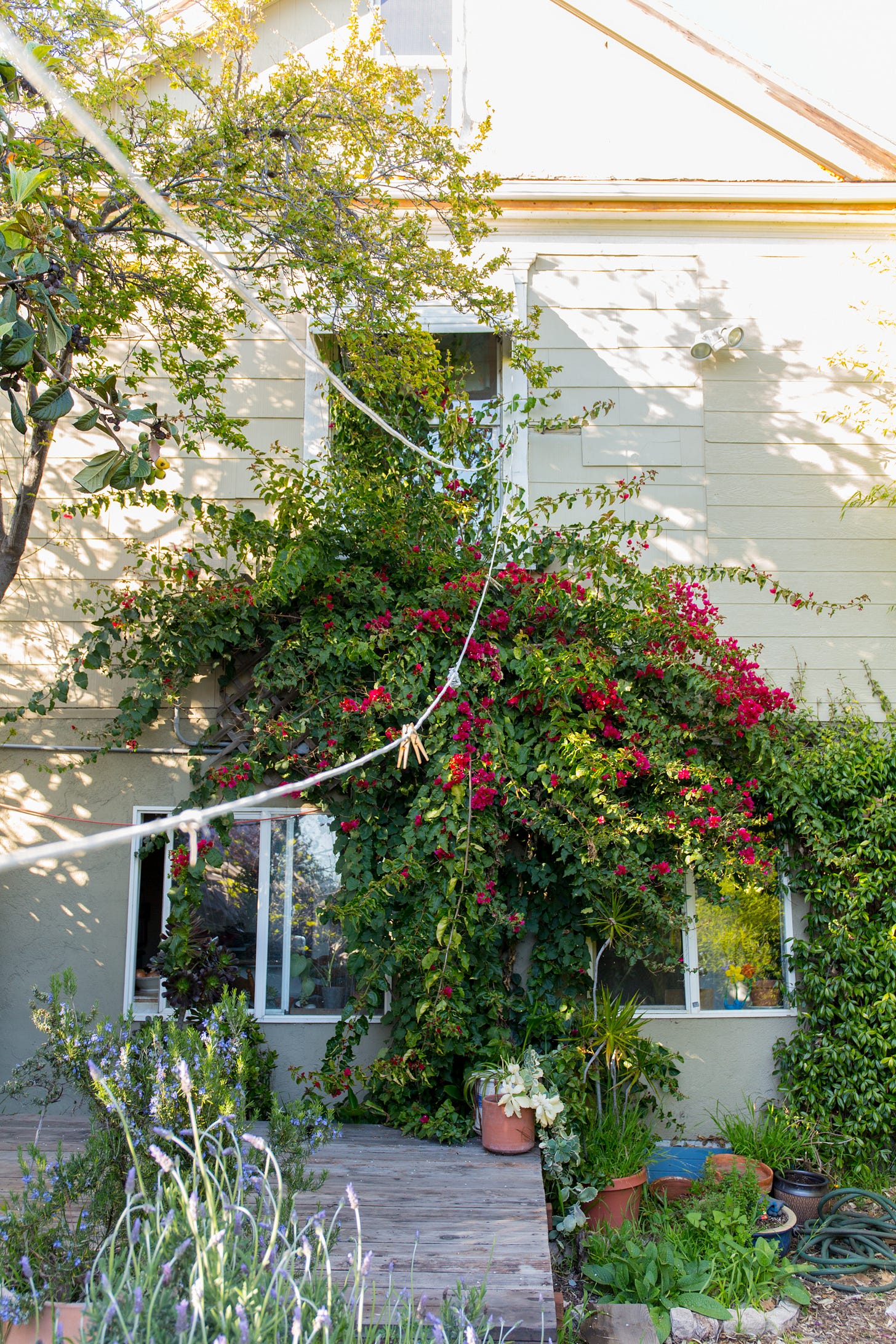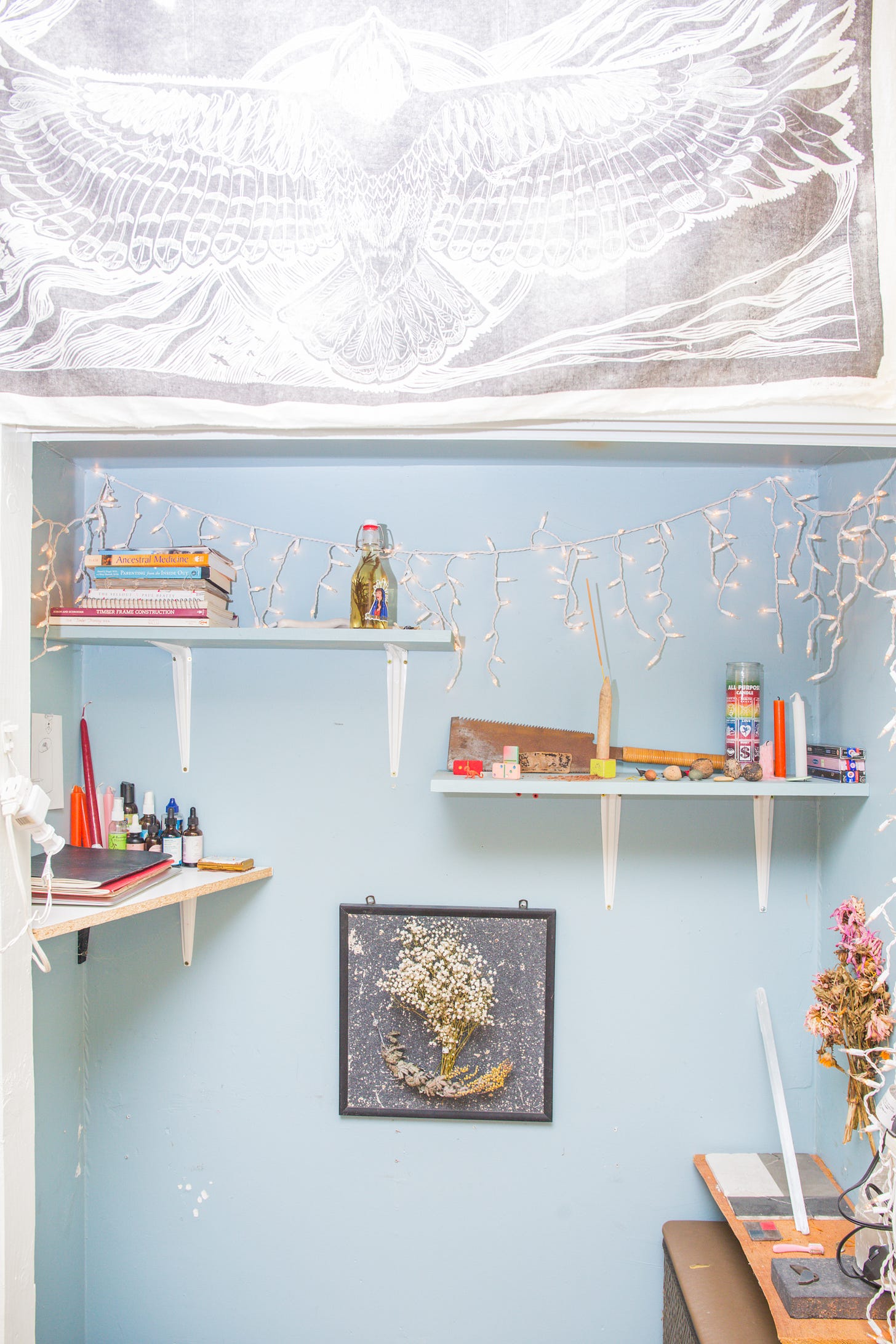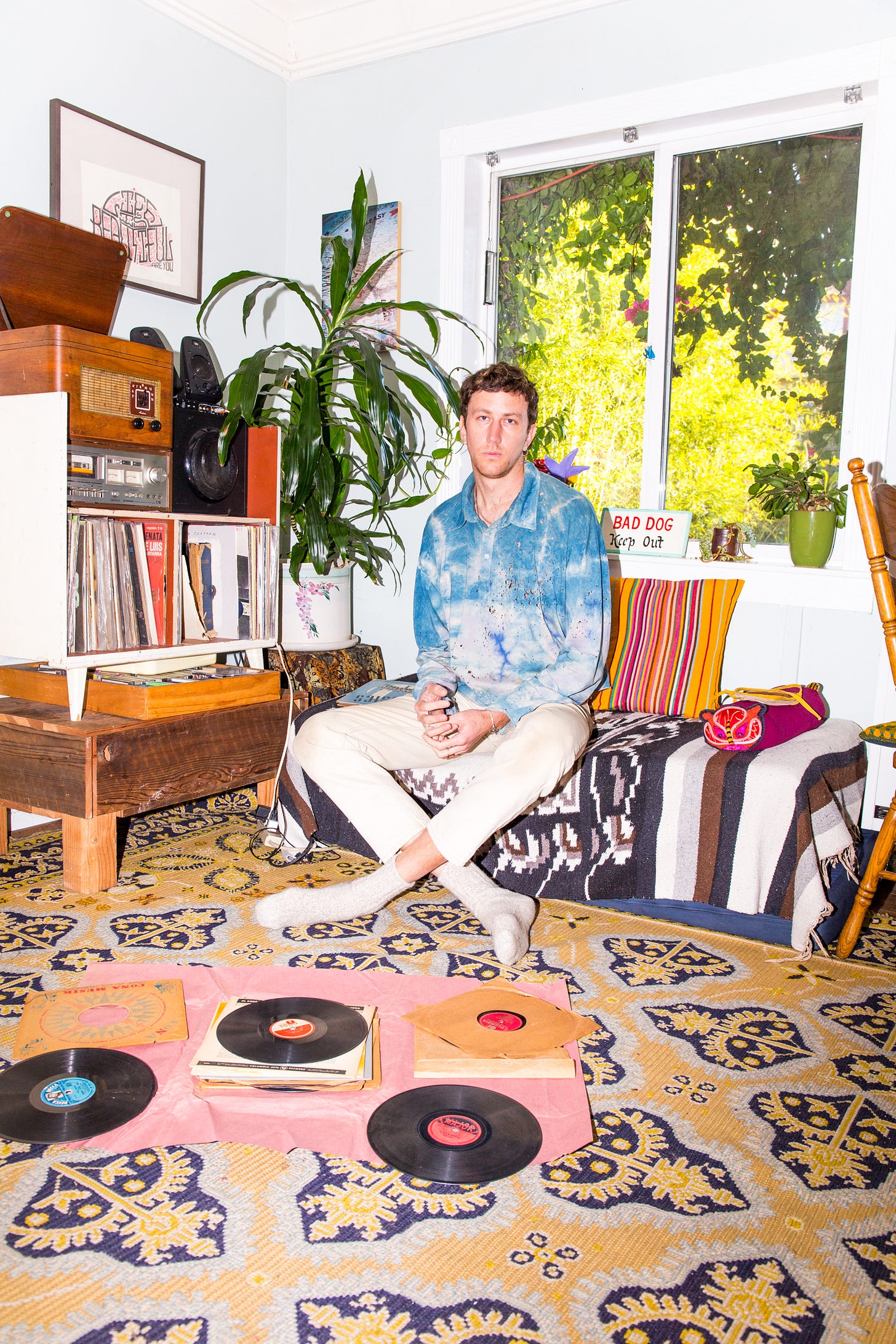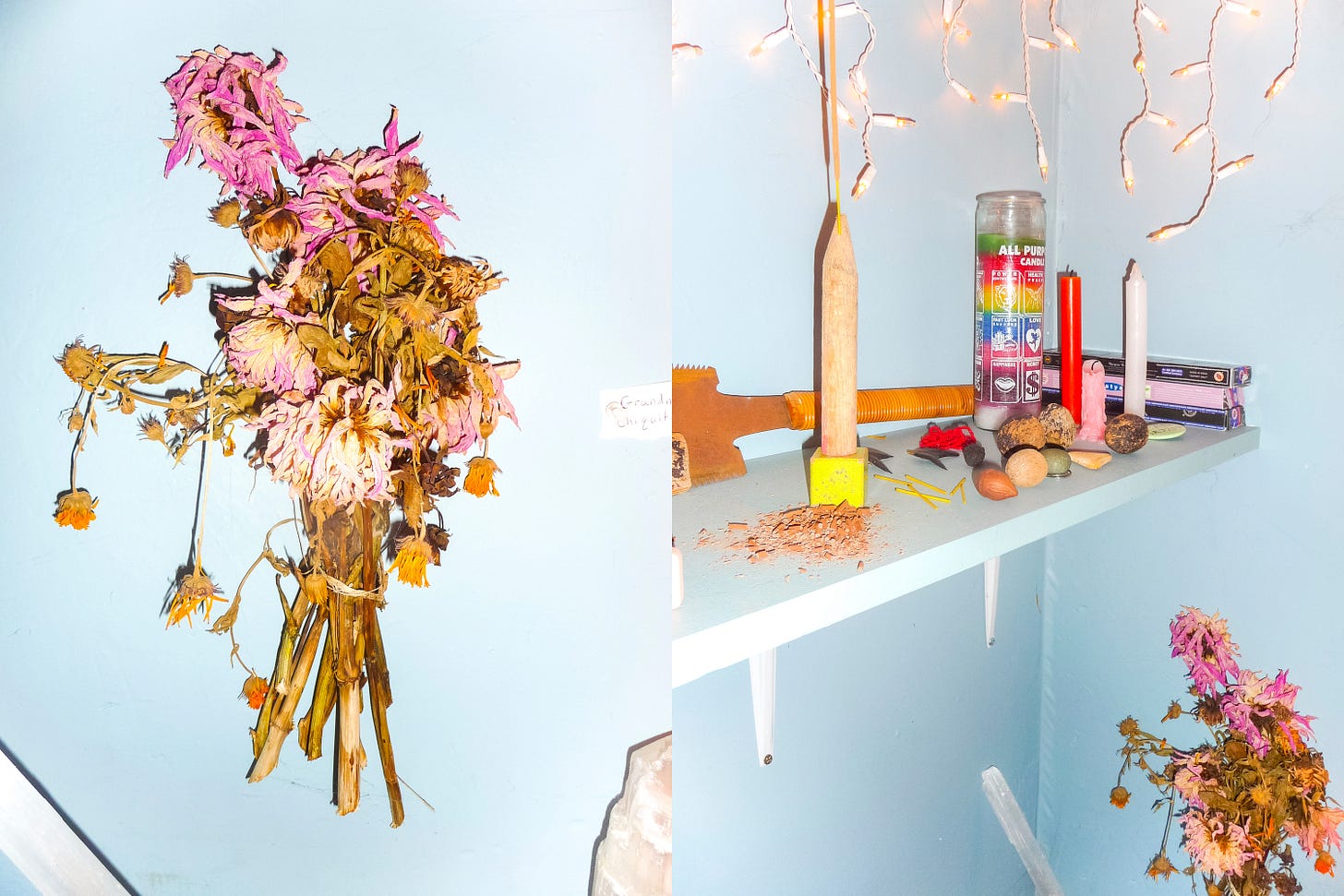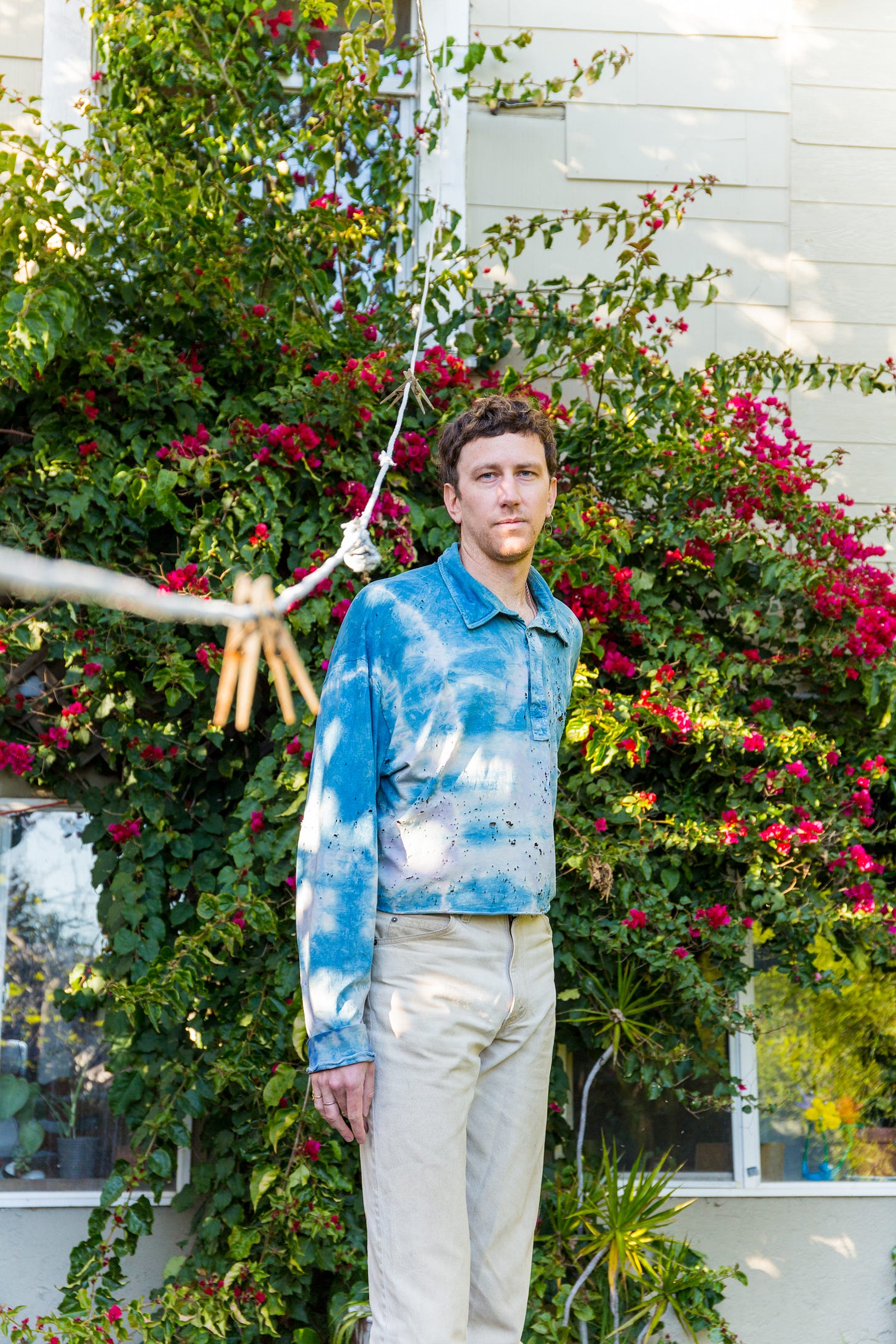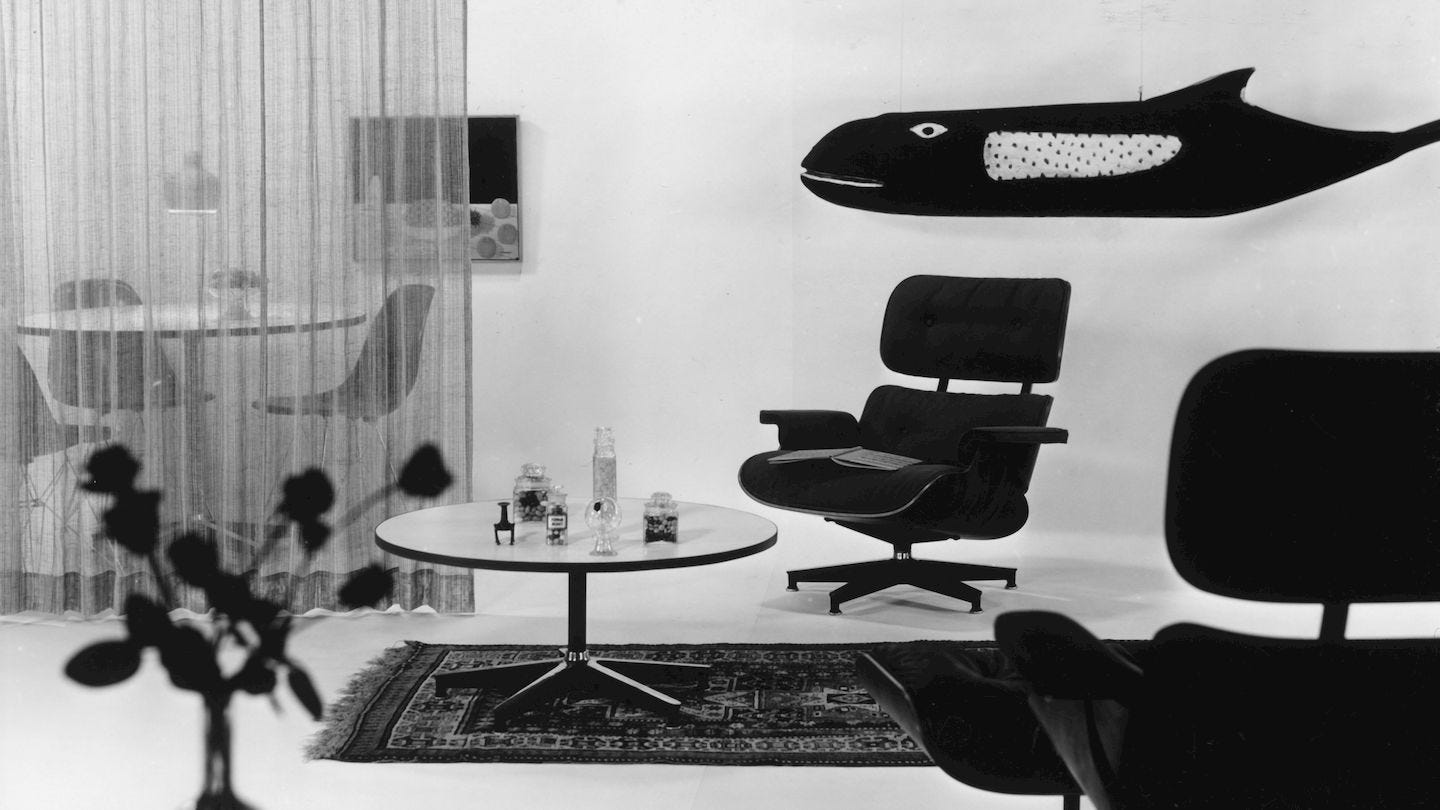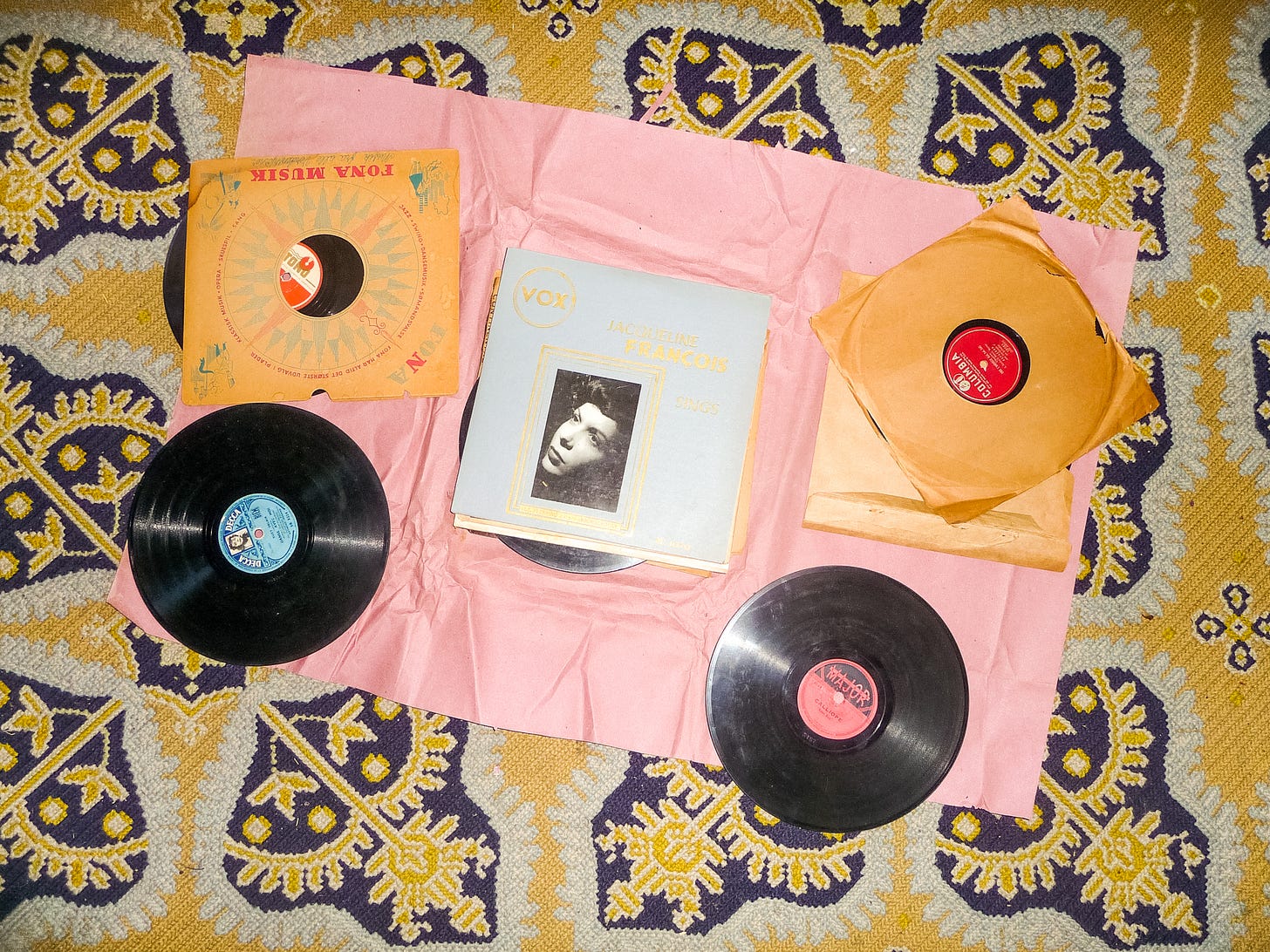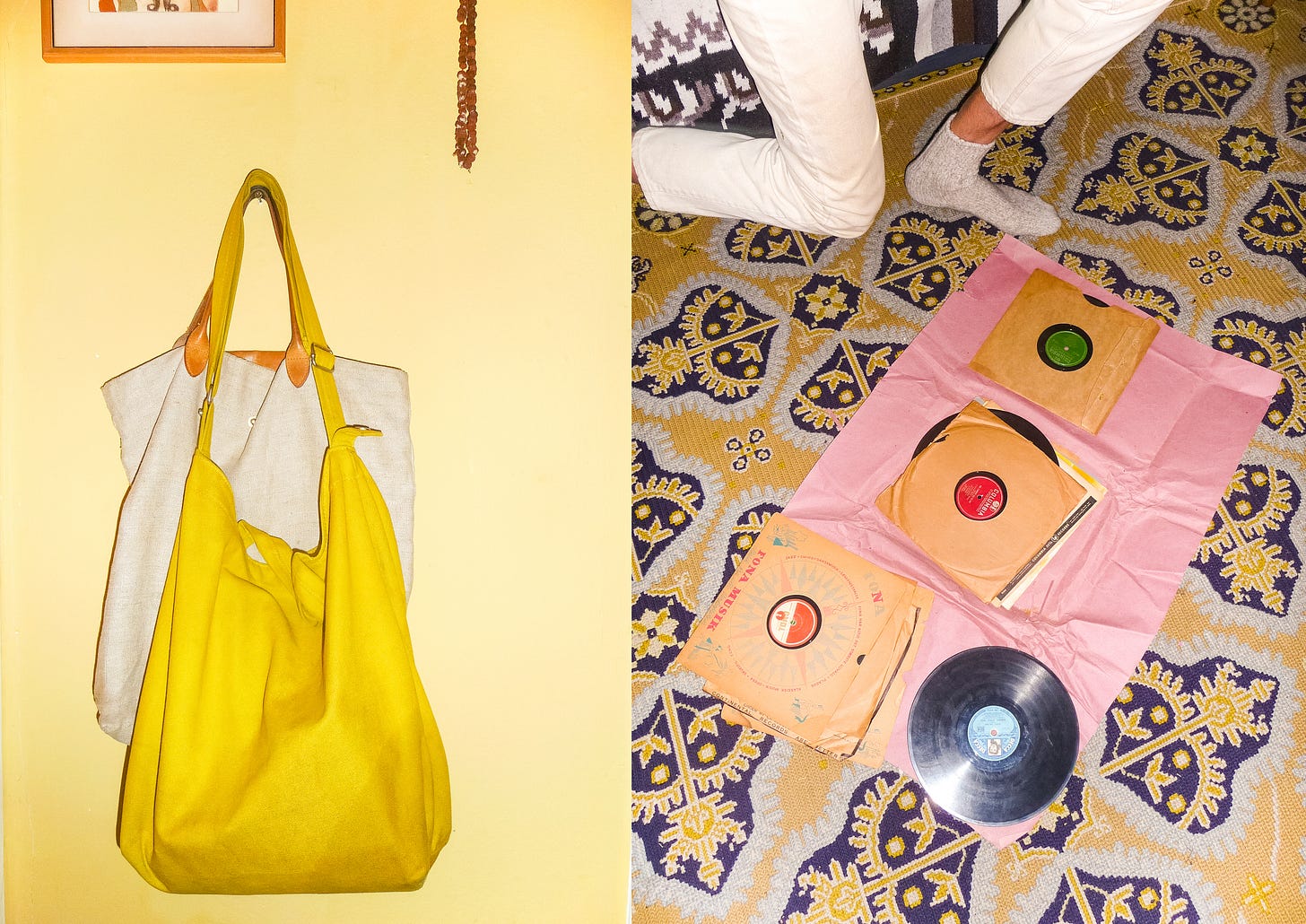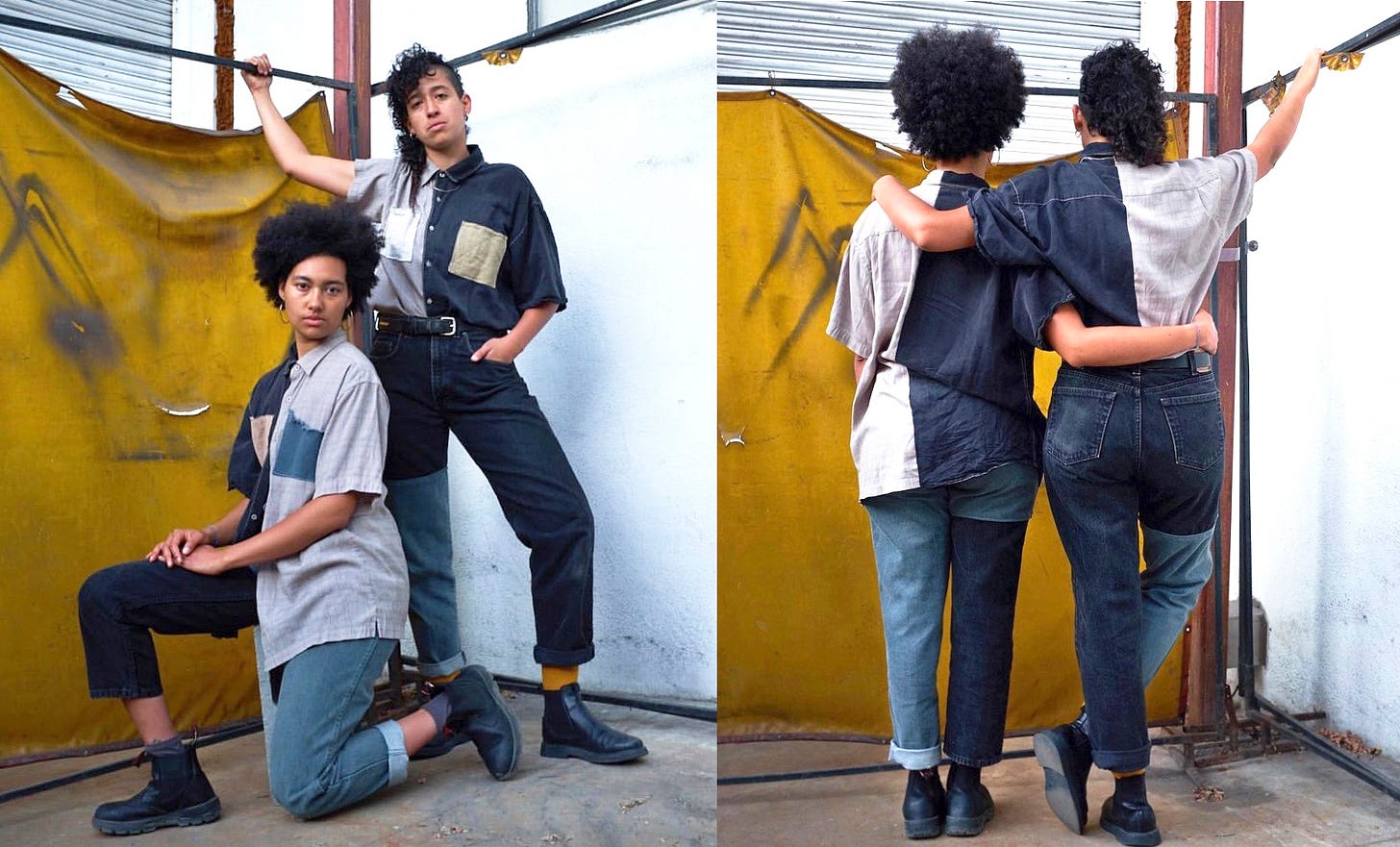At home in Oakland, California with with Raphael Villet.
"Colors have a way of soothing and upsetting me." - Raphael Villet
Good morning,
For this month’s REALM I visited the Oakland-based home of Raphael Villet, an artist, photographer, bookmaker, small press publisher and all around Renaissance man for whom very little is out of reach. Being somewhat Amazonian myself, I felt a kinship for Raphael (who’s nearly seven feet tall) the first time I saw him, two lanky giraffes locking eyes above a sea of heads at the San Francisco Art Book Fair, years ago. Not only was I taken by Raphael’s immediately warm and friendly mood, I was drawn to his clever manipulation of the xerox machine to make artworks, and his dizzying, documentary photography-saturated array of zines. From his low-fi photographs and newsprint paper publications to his love of risograph printing techniques, Raphael has a way of documenting real life, particularly in the grittier corners of a city, felt and tender. His blog is a veritable waterfall of photographs (punk-y, robust, street imagery) in the genre of loose, black and white Hamburger Eyes documentary imagery. Textured and layered, despite their digital form, viewing Raphael’s photographs is akin to flipping through a just-made, inky zine, an antithesis of digital spareness, sanitization, and general ‘prettiness'.
When Raphael started deconstructing thrift-store clothes, newly conjoining similar pieces into non-identical twin garments, I swooned over his perspective—stark, awkward, hopeful, inventive—once again. Raphael’s sense of construction, raw and resourceful, is evident in his bookmaking as well as his clothes-making. I became curious about his home and his thoughts on domesticity, work-space, inspiration, materials, and private space, since his photographs tend to break down walls of public/private both in tone and space. In Raphael’s home-realm, there is a focus on humble artworks, previously used items, and a no-holds barred color sensibility; there will be no monochrome baskets and linens lounging about here. Shared communally by friends, Raphael lives in an old Victorian draped in flower-vines on a large, busy street in Oakland. I found myself feeling carefree (and about a decade younger) just being in his colorful cacophony of campfire, cats, cacti, pattern, vinyl and altars galore.
Hi Raphael! What is your home-aesthetic in 3 phrases?
Spaces as small moments. Somewhere between minimal and minimally cluttered. My cozy lil hideaway.
How do you select the art you live with?
Lately I’ve been exclusively buying art from artists in my community. I usually buy small artworks, beautiful little moments. I used to think it was gaudy to buy art to match your couch, and now it seems like one of the most sensible things one can do for a space. I work professionally as an art installer which takes me into homes across the Bay Area. I’ve seen some really amazing art but mostly it’s such crap. Truly obnoxious, confounding, weird work. Sometimes I imagine a X-Y graph with a line for increased wealth and a line for decreased taste.
I remember being paid to install fifty pieces for a new office for a company in downtown SF. Beautiful space, marble countertops, ornate fixtures, slickly integrated technology, and then they hire some interior decorator to fill the space with third rate photos of the Golden Gate Bridge. It’s really sad and makes me quite mad from time to time.
Installing art has truly given me an appreciation for the possibility and potential for art to transform a space. I think of it as the cherry on top! The capstone. It’s magical and yet, an afterthought for many people.
In your bedroom, you’ve made a melange of altars. Have you always made altars where you lived, and what’s the role they play in your daily, domestic life?
My favorite thing about an altar is that it’s a constant work in progress, a reflection of what objects and ideas I’m thinking about at the time. Altars, to me, are about inviting reverence and celebration into my life. I see it as a practice integral to a full, joyous and curious life. Reverence lets me appreciate the mystery of all that is around me, all that allows me to live in present communion.
How do you know when it’s time to move?
I’ve struggled my whole adult life with this in housing and relationships. Somehow I forget I have the autonomy to move on! I’m still understanding it but I think it’s related to some kind of attitude in my family that is adaptable to, and resourceful in situations, instead of leaving them.
I feel like knowing when to move on is one of the biggest parts of growing up. Moving on often means letting go of something that you want but don’t need, or something that you’re just trying way too hard to control. Relinquishing is a spiritual practice. It’s a practice of inviting abundance, knowing and trusting that what we let go will come back to us in new, bountiful ways. I’d like to think that my intuition to move at the right time is getting stronger. Onwards and upwards!
What do you value most about home, now?
I’ve been in this home for 3 years; before that I spent 8 years living in warehouses. Concrete and steel. Everything was home depot’ed in those places: the sinks, the stairs, the skylights. They were dangerous and cold and big and impossible to keep clean. There were also wonderful. One day I came home to the old yogurt factory I was living in, and my landlord had gutted my kitchen. I simply no longer had a kitchen. No protections. I am grateful for this home, for its tidiness, manageability, and its consistency.
You have a knotted piece of blue yarn above your bed which reminds me of a party game from my childhood where lots of kids tie one end of a ball of yarn to a piece of furniture, then walk through the house, unraveling it until it runs out. I was obsessed with the game: it made the entire house a new place with totally different sense of space. What’s the story of your yarn?
I’m so glad you asked! Years ago I went to the Eames retrospective at the OMCA. It conveyed the couple’s processes, one of which was researching and referencing nature. They had hundreds of slides of sea urchins and other creatures that informed their sense of form and shape. They collected all kinds of odd objects, one of which was a 6-foot long wooden…..whale! It was huge yet looked light and hollow. I fell in love with it and want to create a suspended sculpture one day; the yarn is a placeholder for that. Filling ceiling space is such an unconventional and scandalous intervention!
Your space includes every color of the rainbow, from your dish-ware to your candles to your various vintage blankets. Is the colorfulness intentional or serendipitous?
Color is a guiding force in my space. I’m totally obsessed with proximity, with subtle juxtapositions of color. There are no neons and there are rarely purples or greens in my palette. I shy away from stainless steel or any other shiny, clean metals or plastics found in contemporary condos. Conversely, I’m obsessed with Art Deco fabric wallpapers.
Colors have a way of soothing or upsetting me. Some are so gaudy they make my mouth itch; some melt me into feeling good about the world. For the most part I’m interested in subdued and faded colors. Too many bright objects feels cheesy and even pretentious to me. By inserting just a few, they pop in just the right way. I’m always grasping for colors that reflect the natural world--marigold and indigo and rust.
Tell me about your record collection and your vintage stereo: do you prefer old technology for your music-listening?
My grandmother, Chiquita Villet, died 7 years ago in Los Angeles. My dad and I emptied her entire suburban house and in the process I discovered her love for music, which I’d never realized when she was alive. First, I noticed her huge collection of 78 rpm records; at some point she’d paid to have them transferred onto cassette tape so she could listen in her car. There was a lot of music by the Mexican band Trios Los Panchos and a lot of European jazz. At the time I wasn't really listening to music like that, but I've always been interested in new music and records especially and decided to take a portion of the records with me. I'm grateful for [them] as a connection to her. I've come to love the music she did, and cherish the opportunity to hear [it] on a 78 player, which is just such a uniquely warm experience.
How do you cultivate your style, both at home and in general?
When I stepped into my bedroom for the first time I immediately knew how to paint it--like a 1940’s toy box, somewhat circus-like. I realized I wanted something playful to make up for the small, dark space. And that’s how I navigate the rest of my home style—blindly and graciously following intuition. I’ve had experience after experience of buying or collecting something without knowing why or how it’s going to turn out, only to understand and see how right it was for me, in time.
I like worn items, saturated colors, interesting textures. I have a deep appreciation for the durable design of functional objects throughout the twentieth century. To me, clothing and objects are an opportunity for celebration of form, color and experience. There are a translation of careful thought and experimentation into something that you can wear, can live with. How wonderful. Obsession with clothing gets a bad wrap! Sure there’s vanity, which is not all bad itself. But there’s so much more to engage with….clothes are always an opportunity to have and be an experience.
A big part of my style has to do with my height and body type, which is real tall and real slim. I’ve had a hard time finding “normal” clothes since I was eighteen when I started to really grow. I’m six-foot-nine now and it’s only in the last five years that I’ve started to cultivate my style, mostly through embracing my height and that clothes don’t ever truly fit me, letting my body stretch out from wonderful fabrics around my ankles and wrists. I’m grateful for the influence my body has had on my style, actually. I like to think it’s kind of punk. My parents are always saying my pants are too small but I think they’re just right.
Describe your home in 5 words.
A cozy and wonky cove.
Describe your dream home in 5 words.
A sun-drenched and kooky cove.
Delving Deeper:
Find out more about Raphael’s art, his publishing projects and installation services. Sadly, his twin garments are all spoken for, but I’m waiting for more, patiently.
Etymology Interlude
Style stile (noun).
Early 14th Century Old French, from Latin origin and long before that, Greek.
Stile derives from the Old French word estile, meaning "style, fashion, manner" from Latin stilus "a stake or pale, pointed instrument for writing, style of speaking or writing.”
Stile means "writing instrument, pen, stylus; a piece of written discourse, a narrative, treatise” and “a manner or mode of expression."
There is argument among linguists as to whether stilus derives from the Greek word στῦλος for ‘column’ but despite some debate, we can surmise that what we now call style derives from the word for stake, column, or writing instrument. We express ourselves not only physically by hand, but in word choice and of course, tone. It seems all of this has extended into mannerisms and general comportment, as well as dress—in style as we often think of it today.
Next time you tuck a pencil behind your ear, consider it a double play of stilus/style.
Consider home…
A place to celebrate form, color and experience, to transform daily routine into ritual. Sharing this wavelength is a (quite long, but savoringly satisfying) discussion about color, cooking and culinary alchemy with chef Camille Becerra on Soundfood, a podcast started by Nitsa Citrine, who explores concepts of nourishment across all disciplines. (She was lucky enough to grow up at Esalen Institute, can you imagine!) Listen here or check out Camille’s website who’s home page gallery is visual dessert.
I’ve been dipping into Bruce Wood’s book Possessed: Why We Want More Than We Need, which ties in ideas of ownership to virtue-signaling, interior psychology and politics. I resonate with many of the concepts he evokes. This book considers how we got to a place in the modern world wherein we are actually possessed by our possessions—scary, and humbling.
For a shorter, fascinating read, I recommend Anna Wiener’s “The Strange, Soothing World of Computer Generated Interiors”. A wise, young, consistently funny tech writer, Anna is consistently easy to read, and establishes a wry sense of humor and insight while remaining kind and clear.
That’s basically my life goal: insight, humor, kindness—fused.
Until next time,
Airyka




